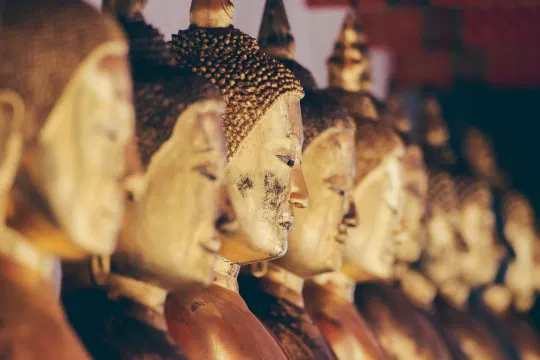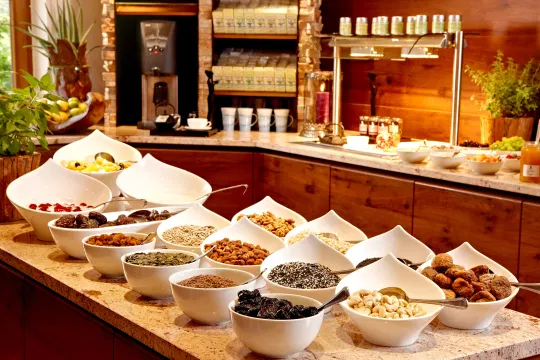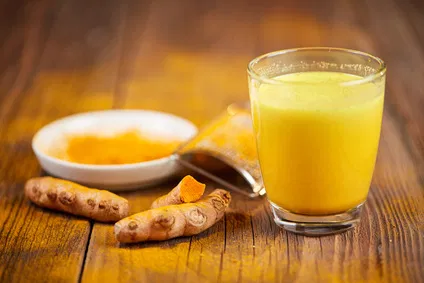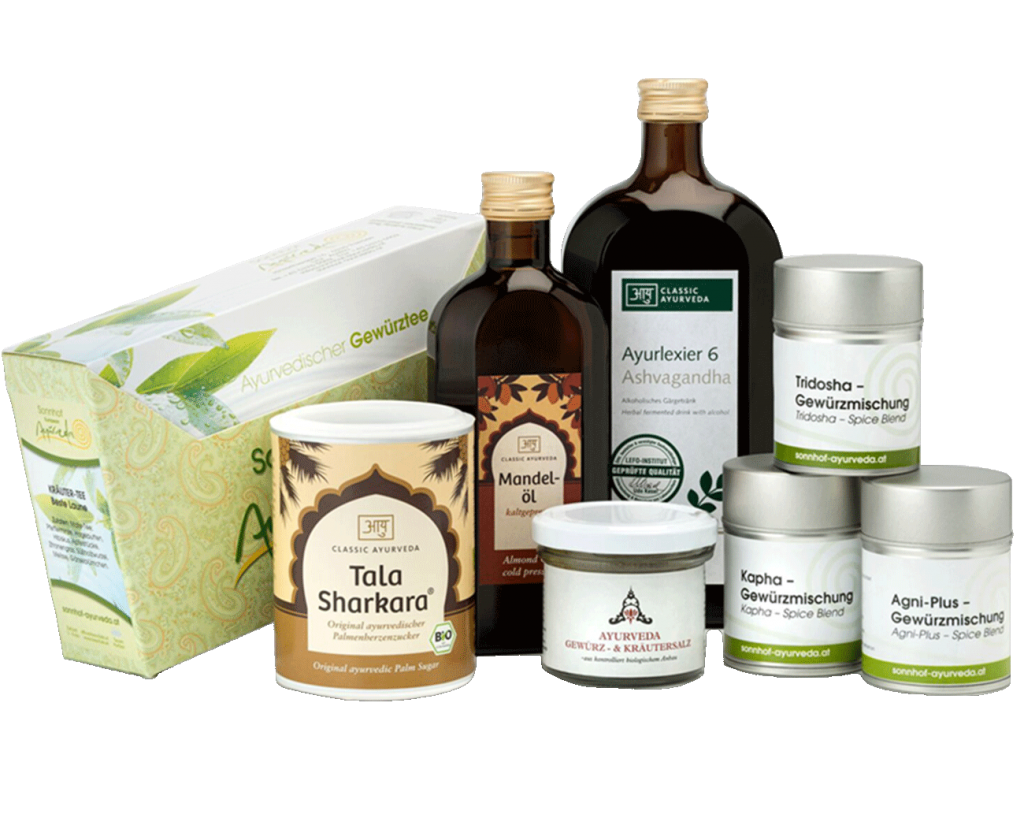Ayurveda is the oldest holistic healing art of mankind. Ayurvedic nutrition is one of its core elements. Depending on the type, one can ensure a healthy body and a balanced mind with the appropriate foods.
Where does Ayurveda come from?
Ayurveda comes from India and can be translated as follows: The knowledge (veda) of long life (ayur). The holistic system includes the following points: Massages, special Cleansing cures (panchakarma), physical exercises (Yoga) and the most important element, nutrition. All this is to keep the body functions such as metabolism, digestion, tissues and elimination in balance so that no diseases can develop.
The three doshas
Ayurveda assumes that nature in all its forms of expression consists of the five elements fire, earth, water, air and ether.

These elements give rise to three groups with different characteristics. These have an influence on the human body and are called doshas. They are divided into Kapha, Pitta and Vata.
They are the three basic life energies of the human being and translated from Sanskrit it means "that which can spoil".
According to Ayurvedic teachings, diseases arise from the imbalance of the three doshas and each person is born with a very individual constellation of doshas.
Ayurveda also only distinguishes between three instead of four annual phases.
- The Kapha phase is between the end of February and May.
- The Pitta phase is between June and September.
- The Vata phase is between October and January.
These are the characteristics of the three doshas
Kapha holds things together and is formed by the elements water and earth. It stands for the mental and physical strength of the body and stabilises the immune system.
Pitta stands for "to heat" and is responsible for metabolism, the digestive system and other biochemical activities in the human body. It consists of the basic elements fire and water.
Vata means "to move" and regulates all movement processes in the human body. It supports the conscious and unconscious movements and activities of the body. It originates from the basic elements air and ether and is responsible for the regulation of the circulation and the body structure as well as the tissues.
Six flavours combine
Regardless of which dosha is yours, every meal should contain all six tastes sweet, sour, salty, tart, bitter and spicy. Food that is not fully digested leaves behind metabolic waste and toxic substances, so-called ama, which can be the cause of numerous ailments.
Correct combination of foods
In addition to focusing on the doshas, the focus is on high quality food, easy digestion of food and the right combination of foods. Cardamom, for example, stimulates the digestive fire Agni.
It isimportant that you do not combine animal proteins (meat, fish, eggs or milk) as this leads to metabolic waste.

And now it gets tough: since milk is considered a food in its own right, it should not be mixed with anything salty or sour, vegetables or fresh fruit. So in future, muesli with fruit and yoghurt will no longer find its way onto the breakfast table.
From an Ayurvedic perspective, only pulses, mung beans, chickpeas and lentils are suitable for combination with milk.
Fruit should generally be eaten alone, as combining it with other foods can lead to fermentation in the digestive tract.
Sweet foods include cereals, pasta, potatoes and fats. It is best to combine these with vegetables and salad.
Rice, as a light food, is the exception and goes with everything.
You should only eat when you are really hungry and completely avoid snacks in between meals. You should also make sure that you have a break of 3 hours between meals so that the food can be completely digested before new food is added.
You should also have warm drinks with hot meals, such as hot ginger tea.
A great recipe is the Golden Milk
One of the main ingredients of golden milk, and responsible for its colour, is turmeric. The golden spice is said to have many good properties. For example, it is said to have an anti-inflammatory effect and to act as the perfect joint lubricant. It ensures flexible joints and breaks down calcium deposits. It also cleanses the lungs and relieves the liver.

Recipe for the turmeric paste
- 1/4 cup turmeric
- 3/4 cup pure, still water
Put the water in a saucepan, mix with the turmeric and heat. Simmer on low heat for about 11 minutes, stirring regularly until it becomes a paste.
Then simply let the paste cool down and put it into a sealable container. The paste will keep for about 3 weeks.
Recipe Golden Milk
- 1 cup milk
- 1 teaspoon turmeric paste
Mix the two ingredients and heat the milk. Then you can add a little ground black pepper and some Ghee to the milk. This is how the effect of turmeric unfolds best.
For a detox cure, consume the drink regularly over a period of 3 months. Especially in the evening, the Golden Milk is perfect as a nightcap.
Hopefully you have now gained a rough insight into Ayurvedic cuisine and perhaps you will try the "Golden Milk" directly at the next opportunity. Enjoy it!





